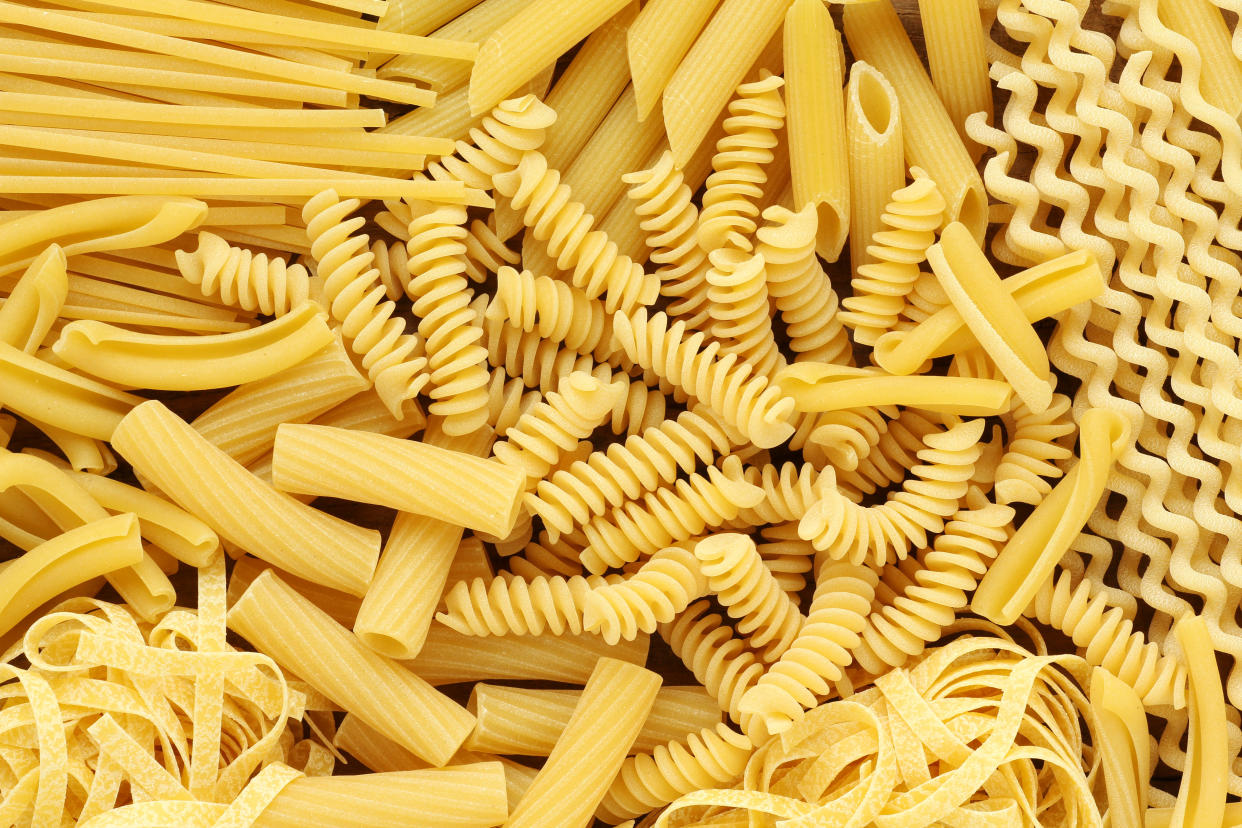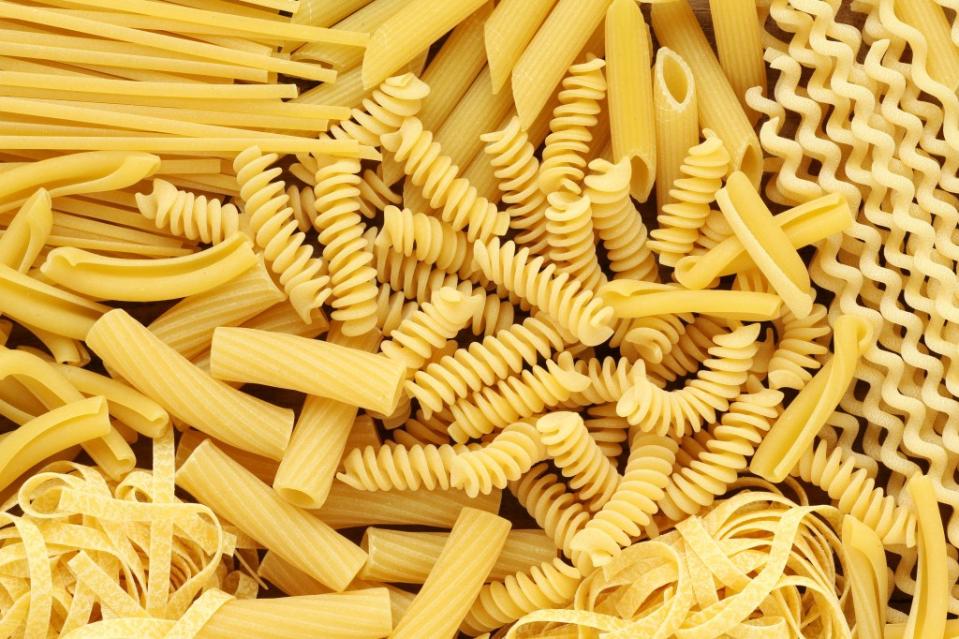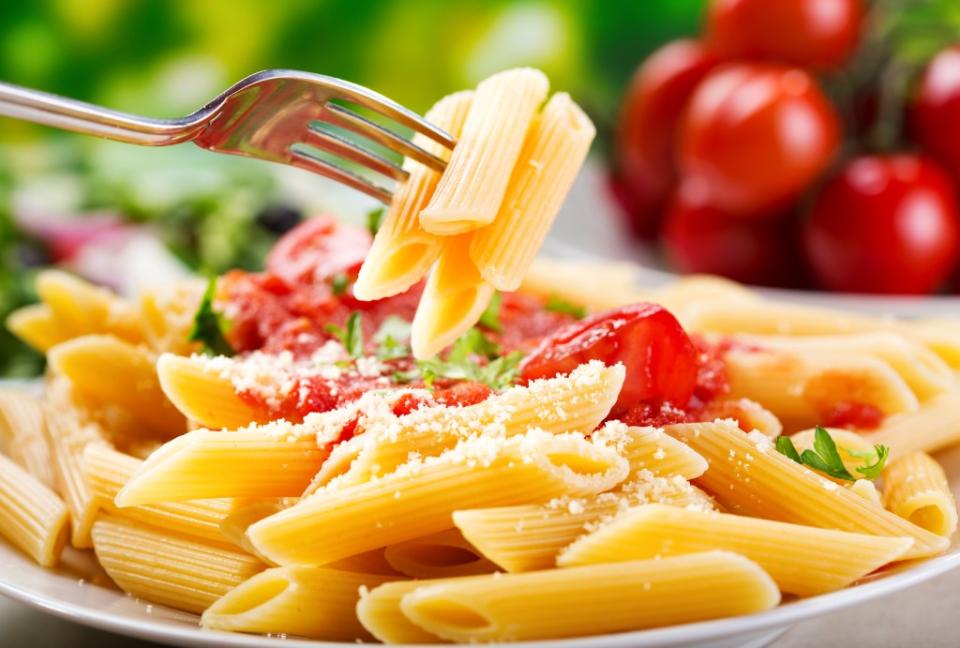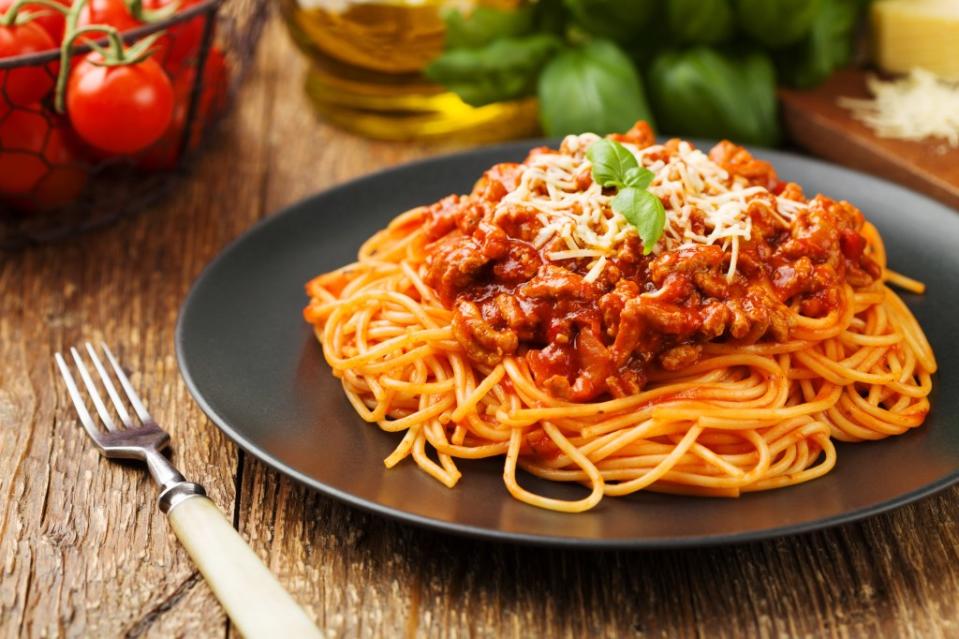Pasta isn’t unhealthy, but the way you’re eating it could be: dietitian

There’s no reason to get upsetti about your spaghetti.
Carbs are typically frowned upon when it comes to weight loss and diet culture, and pasta, in particular, takes a lot of the heat.
But StudyFinds’ dietitian Shyla Cadogan argues that pasta isn’t inherently unhealthy — but the way you’re eating it might be.
The recommended serving size for pasta is 2 ounces of uncooked pasta, which is equivalent to approximately 1 cup of cooked pasta, according to Barilla, the world’s largest pasta producer.
One general serving has about 200 calories, 40 grams of carbohydrates, 6 grams of protein, and 1 to 2 grams of fiber.
Since pasta is mainly comprised of carbs, people tend to look at it as “empty calories,” Cadogan wrote, but carbs are the “preferred energy source” for the human body, so it actually provides nutrition.
Whole-grain pasta specifically contains more fiber and protein, two things that will keep you full for longer and decrease the likelihood of overeating.
It gets tricky when it comes to how it’s prepared.

Adding sauces, butters, creams, meats and/or cheeses can add up the calories and inevitably end up making the complete dish have no balance of beneficial nutrients.
People also choose to eat pasta as their main dish rather than a side, so they’re most likely going to eat more than the recommended serving size, Cadogan said.
“Virtually any food eaten in excess or as part of an overall unbalanced diet can become unhealthy fairly quickly,” she said. “It comes down to balancing your plate.”

It’s often advised that a dinner plate should have foods in a variety of colors, and the same goes for a pasta dish.
For example, Cadogan suggests making a marinara-based pasta dish with vegetables for fiber and a protein source.
Another way to balance your pasta dish is to make it just a small part of your whole meal as a side dish.
Nowadays, there are plenty of high-fiber and higher-protein alternatives to wheat pasta, such as chickpea pasta, protein pasta, edamame pasta and black bean pasta.
Just because low-carb diets are one of the more popular diets for weight loss doesn’t mean pasta has to be left out of family dinners.
“Pasta isn’t inherently unhealthy. It doesn’t deserve all of the disrespect,” Cadogan wrote.

Not only can pasta provide fiber and protein, but it can also make you happy.
A previous study conducted by the Behavioral and Brain Lab at the Free University of Languages and Communication IULM in Milan, Italy, found that eating pasta can boost your mood — and it can make you just as happy as hearing your favorite song.
Food & Wine reported that 40 participants between the ages of 25 and 55 got to eat pasta as researchers analyzed their physical and neurological changes. Those responses were then compared to the changes participants had while listening to their favorite songs or watching a sports event.
Eating pasta beat out both music and sports when it came to eliciting positive emotions and “activating cognitive memory processes,” according to the researchers.
“We have always known that a good plate of pasta makes people happy, but we did not know why and to what extent,” Riccardo Felicetti, president of the Italian pasta makers of Unione Italiana Food, said in a statement.
“Now, the official confirmation comes from this research that we commissioned from IULM, in which pasta is chosen as the food of happiness, or as we pasta makers like to say, with the best happiness/price ratio.”

